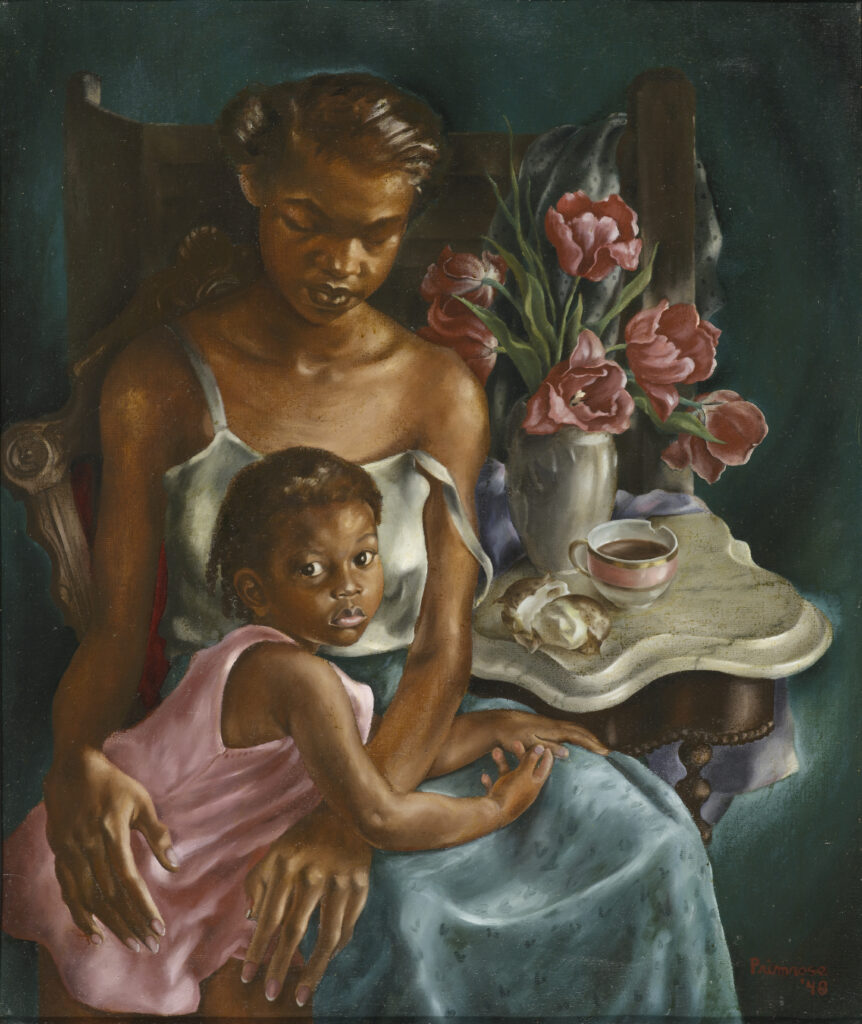Beulah’s Baby (work of art)
Artwork Info
Key Ideas
- This is an oil portrait of a mother and daughter that includes a still life of objects on a small table.
- The painting was created during racial segregation in America.
- The woman depicted as “Beulah” was a college student from Greensboro, whose real name was Evelyn Leaverson Davis. The young girl was not her child. She was the daughter of a family friend.
- The artist, Primrose McPherson Paschal, was a white woman who grew up in North Carolina.
Learn More
This portrait depicts a tender relationship between a mother and child. The mother gazes lovingly at the little girl, who looks directly at the viewer. Paschal created this painting in 1948, during racial segregation in America. This was the separation of white people and people of color in public places, including schools. Segregation was enforced by Jim Crow laws. Poverty was common in Black communities in the South during this time. The chipped teacup and the bouquet of flowers on the table were a blessing of beauty in the constrained circumstances that characterized the segregated South of the mid-20th century.
Beulah’s real name was Evelyn Leaverson Davis (1928–1993). When this painting was created, she was a 19-year-old student in her first year at North Carolina A&T State University. Her sister, Dorothy “Dot” Morton, worked as a housekeeper for Paschal and introduced them to each other. The young girl in this painting was not Davis’s child, but she did have a newborn son at the time. The girl was the daughter of a family friend. She sat with Davis for a photo session in Paschal’s studio.
Primrose McPherson Paschal was a white artist who was born and raised in Raleigh. She studied art in New York City and later joined the art scene in Raleigh and Durham. Her work continues to be shown throughout North Carolina.
Additional Resources
Resources for Teachers
- Read a blog post about Primrose McPherson Paschal.
- Read an article about black codes and Jim Crow laws.
- Take a voting literacy test (at the end of this article).
Resources for Students
- Read an article about still life art.
- Watch a video about Jim Crow laws.
- Visit a website to learn more about portrait painting and drawing.

